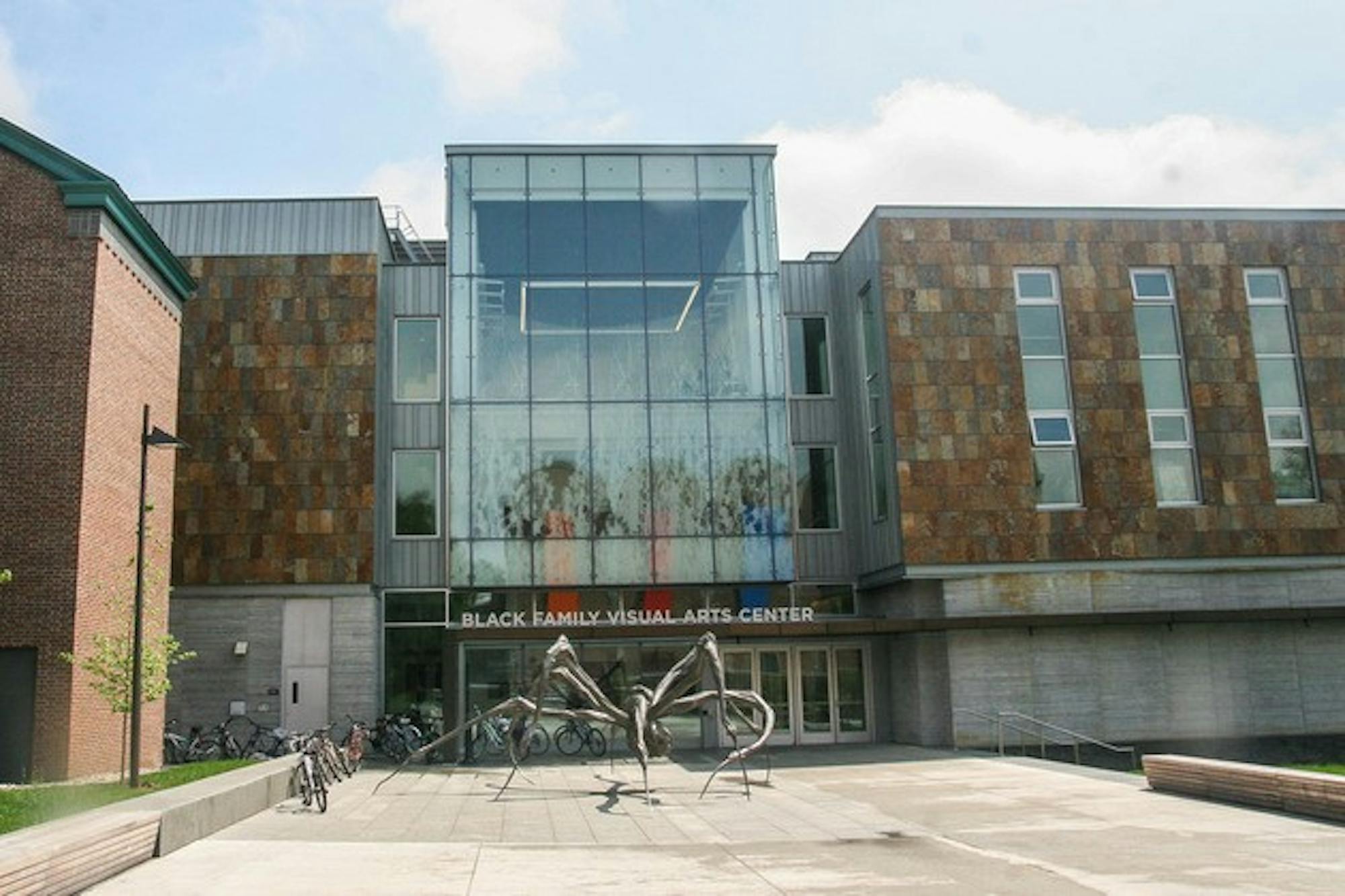Though older, traditional New England buildings such as Dartmouth Hall, erected in 1784, typically come to mind when thinking about campus architecture, the College has recently made a concerted effort to broaden its structural aesthetic.
Dartmouth's modern facilities notably include the Black Family Visual Arts Center, a gift from former trustee Leon Black '73 and his wife Debra. Completed last year, it sparked the Year of the Arts initiative and houses expansive art studio spaces. The facade is ornamented with Ellsworth Kelly's "Dartmouth Panels," and the building opens onto the Maffei Arts Plaza, donated by Greg Maffei '82.
"A campus should reflect the composition of the student body and the morality the institution strives towards, as well as its surrounding environment," said David Williams '79, a co-chair of Dartmouth Alumni in Design and Architecture. "I think the VAC, due to its transitional location along the perimeter of the campus, attempts to reflect that transitional stature in its use of materials and the urban space it creates with the Hood Museum and the Hop."
The VAC anchors Dartmouth's arts district, which also includes the Hood Museum, built in 1985 and endorsed by Harvey P. Hood '18 and his wife Barbara, and holds nearly 60,000 objects dating back to as early as 1772, as well as the Hopkins Center, a foreshadow of architect Wallace K. Harrison's Lincoln Center in New York.
"What I look for now on the Dartmouth campus are buildings that are especially sensitive and responsive to context [and] community," studio art professor Jack Wilson said. "I think the Hopkins Center is an incredibly responsive building to its context."
At the northern end of campus stands the Class of 1978 Life Sciences Center, completed in 2011. It unifies the biology department and holds extensive laboratory, research and teaching spaces.
"The life sciences building makes me want to study biology," said Sue Reed '81, an architect and a founder of the architecture alumni association.
Williams noted, however, that the rest of the buildings in the area have not been as functionally successful. These include the Sudikoff Laboratory for Computer Science, built in 1993, Moore Hall, constructed in 1998, and Kemeny and Haldeman Halls and the McLaughlin residential cluster, all completed in 2006.
"The juxtaposition of the buildings creates more of an urban street wall limiting access to the north end of campus, as opposed to having it accessible from multiple points," Williams said.
To mitigate this problem, the ground floors of Sudikoff and Kemeny should have been made transparent and devoted to more campus activities to better accommodate student movement from Tuck Drive and Webster Avenue to north campus, Williams said.
Another challenge with the construction of these buildings lies in energy use. One way for the College to move away from fuel oil to more sustainable fuels is reducing the amount of natural gas headlines, which have not been conducive to solar renewables, Wilson said.
With newer architecture comes more complex criteria that were not made mandatory until recently, Reed said. These restrictions concern ventilation, increased access for the disabled and the installment of better safety rules and devices.
"As an architect I'm aware that especially in institutional scale buildings there are an increasing number of constraints that affect the design of buildings," Reed said. "Buildings are much more physically complicated now than they were when Wheelock House was built in the 1770s."
Baker-Berry Library, which houses the Bell Tower and Jose Clemente Orozco murals, was first constructed in 1928 and was modeled after Independence Hall in Philadelphia. In 2000, John Berry and the Baker family donated money to expand the library to include additional study and research spaces for the humanities and social sciences.
"The newer buildings represent more of the spirit of the time and the students and they're wonderful light-filled spaces," said Karolina Kawaika, a studio art lecturer.
Williams described architecture as "an art which we inhabit," and said it evokes an emotional response as students contemplate its purpose and significance.
"While we believe that we shape our buildings, the reality is that our buildings ultimately shape us," Williams said. "A shift in aesthetics is inevitable and should be welcomed as long as that shift [continues] to be founded on sound and substantial reasons."
Reed added that if all of the buildings on campus were of the same style, "it would be less interesting and less of an education."




